 Generally, every owner of property is liable for injuries on their property when it is not in a reasonably safe condition. (Cody F. v. Falletti (2001) 92 Cal.App.4th 1232.) If a party was a co–owner and jointly in possession of the premises, they would be equally responsible for the condition of the premises and equally liable for injury. (Mayo v. White (1986) 178 Cal.App.3d 1083.
Generally, every owner of property is liable for injuries on their property when it is not in a reasonably safe condition. (Cody F. v. Falletti (2001) 92 Cal.App.4th 1232.) If a party was a co–owner and jointly in possession of the premises, they would be equally responsible for the condition of the premises and equally liable for injury. (Mayo v. White (1986) 178 Cal.App.3d 1083.
Civil Code section 1714 states that everyone is responsible for an injury occasioned to another by his or her want of ordinary care or skill in the management of his or her property or person, except so far as the latter has, willfully or by want of ordinary care, brought the injury upon himself or herself.
Even if someone has a small interest in the property and they exercise no control over the management of the property, they still will be liable. (Davert v. Larson (1985) 163 Cal.App.3d 407.) This is because the courts believe relieving individual owners in common of liability would eliminate any motivation of any party to exercise due care in the management and control of commonly owned property. (Id.) Therefore, owners may then be found to be “jointly and severally liable” for a person’s injury.
 California Partition Law Blog
California Partition Law Blog


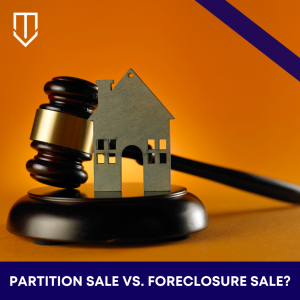 Partitions sales and foreclosure sales are two different ways that a property can be sold. The main difference between the two is the purpose behind the two sales. For partition sales, the purpose is to divide the property and for the owners to get the proceeds in proportion to their ownership. The purpose of foreclosure sales is to pay off a borrower’s loan.
Partitions sales and foreclosure sales are two different ways that a property can be sold. The main difference between the two is the purpose behind the two sales. For partition sales, the purpose is to divide the property and for the owners to get the proceeds in proportion to their ownership. The purpose of foreclosure sales is to pay off a borrower’s loan. 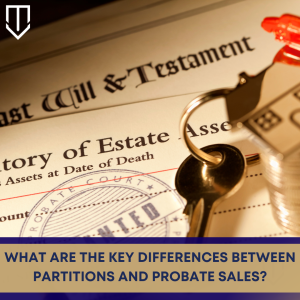 Partitions sales and probate sales are two different ways that a property can be sold. A main difference between the two is that a partition sale is ordered and overseen by the court, while a probate sale is generally overseen by a personal representative, and the court can have minimal involvement. There are also specific steps that the personal representative must take in the probate sale process under California law.
Partitions sales and probate sales are two different ways that a property can be sold. A main difference between the two is that a partition sale is ordered and overseen by the court, while a probate sale is generally overseen by a personal representative, and the court can have minimal involvement. There are also specific steps that the personal representative must take in the probate sale process under California law.  Yes. California law allows a co-owner to take out a mortgage without the other co-owners consent or knowledge.
Yes. California law allows a co-owner to take out a mortgage without the other co-owners consent or knowledge. 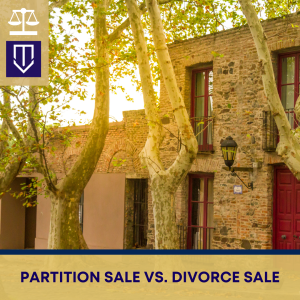 Partitions sales and divorce sales are two different ways that a property can be sold. One difference between the two is that in a partition sale, the court usually decides the proportion of ownership and how the proceeds are distributed among the owners, while in a divorce sale, the court generally must divide the property equally. Another difference is that the divorce sale process is similar to a normal real estate sale. Both sales can be determined informally among the parties or ordered by a court.
Partitions sales and divorce sales are two different ways that a property can be sold. One difference between the two is that in a partition sale, the court usually decides the proportion of ownership and how the proceeds are distributed among the owners, while in a divorce sale, the court generally must divide the property equally. Another difference is that the divorce sale process is similar to a normal real estate sale. Both sales can be determined informally among the parties or ordered by a court. 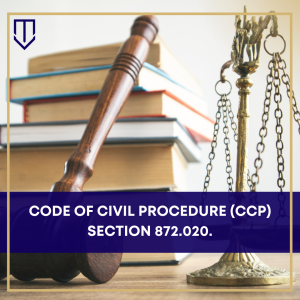 California Code of Civil Procedure section 872.020 is under Title 10.5 Partition of Real and Personal Property. This statute details the scope, or in other words, the
California Code of Civil Procedure section 872.020 is under Title 10.5 Partition of Real and Personal Property. This statute details the scope, or in other words, the  Partitions sales and trustee sales are two different ways that a property can be sold. A main difference between the two is that a partition sale is ordered and overseen by the court, while a trustee sale is overseen by a third party in relation to foreclosure proceedings. While the third party is not beholden to a court ruling in a trustee sale, they must still follow the procedures outlined in California law.
Partitions sales and trustee sales are two different ways that a property can be sold. A main difference between the two is that a partition sale is ordered and overseen by the court, while a trustee sale is overseen by a third party in relation to foreclosure proceedings. While the third party is not beholden to a court ruling in a trustee sale, they must still follow the procedures outlined in California law.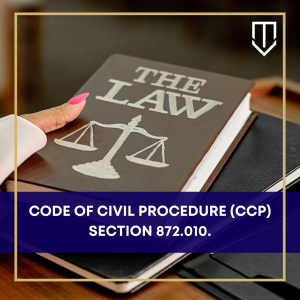 The
The  There are several provisions in real property sale agreements that can affect a party’s legal rights. One such provision is an “as-is” provision, which is often included in contracts for the sale of real property. It is important for parties to keep on the lookout for such provisions so that they are aware of their legal rights in any possible litigation.
There are several provisions in real property sale agreements that can affect a party’s legal rights. One such provision is an “as-is” provision, which is often included in contracts for the sale of real property. It is important for parties to keep on the lookout for such provisions so that they are aware of their legal rights in any possible litigation. There are two common ways an individual can own property: (1) as a tenant in common or (2) as a joint tenant. In California, there is a presumption that the co-owners of a piece of property are tenants in common unless the deed expressly states that the co-owners are joint tenants.
There are two common ways an individual can own property: (1) as a tenant in common or (2) as a joint tenant. In California, there is a presumption that the co-owners of a piece of property are tenants in common unless the deed expressly states that the co-owners are joint tenants.